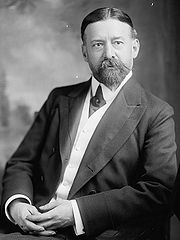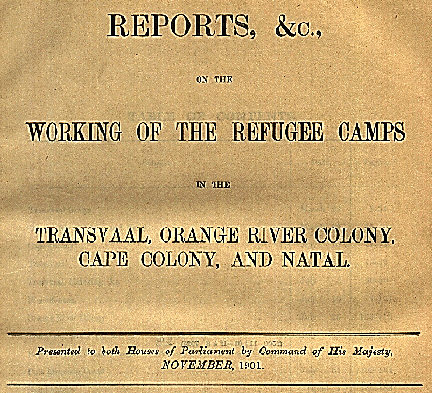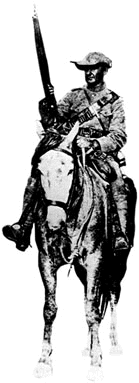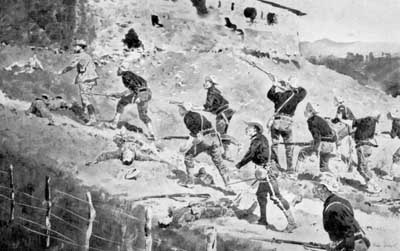James Creelman: yellow journalist
In China
Frederic A. Moritz
DOWNLOAD THIS ESSAY IN .PDF FOR ACROBAT READER
DOWNLOAD ACROBAT READER
CREELMAN: "FATHER" OF HUMAN RIGHTS REPORTING
CREELMAN AT PORT ARTHUR
JOURNALISM AND THE SPANISH AMERICAN WAR
CREELMAN'S MEMOIRS "ON THE GREAT HIGHWAY"
CREELMAN'S MEMOIRS ON SPANISH ATROCITIES
A CLASSIC CASE OF YELLOW
REMEMBER THE MAINE
A CENTURY OF GUERRILLA WAR
CREELMAN'S CUBA STINT
A RELATIVE'S PORTRAIT
YELLOW JOURNALIST: INVESTIGATOR; PARTICIPANT
THE TIGHTENING SPANISH NOOSE
IMPORTING DOMINICAN TACTICS TO CUBA
BITE IN THE GUISE OF BALANCE
JOURNALISM BY INVESTIGATION RATHER THAN RUMOR
CREELMAN BECOMES PART OF THE STORY
EXPULSION FINALLY COMES
REMEMBERING JAPAN'S APOLOGY
SPAIN IN THE THE AMERICAS: THE IMPACT OF SANTO DOMINGO
HUMAN RIGHTS JOURNALISM IN YELLOW: A CENTURY AGO
BOOKS ON SINO-JAPANESE WARS: AMAZON.COM
SPANISH-AMERICAN WAR WEB SITE
SPAIN IN THE AMERICAS: THE IMPACT OF SANTO DOMINGO
BOOKS ON SPANISH AMERICAN WAR: AMAZON.COM
BOOKS ON AMERICAN IMPERIALISM: AMAZON.COM
CASE STUDIES: "REPORTING AS A GLOBAL WATCHDOG"
PRIMARY WEB SOURCES
HOME
A CLASSIC CASE OF YELLOW
Who would have guessed that pioneers in human rights reporting would have opened the door to create an American empire in Cuba and the Philippines?
That is exactly what happened.
In a "classic case of yellow."
James Creelman, a major player, was a veteran of two yellow chains, the Pulitzer and the Hearst.
"Yellow press" reporting of Spain's often brutal attempt to suppress the Cuban independence rebellion beginning in February 1895 helped turn the predominantly Protestant American public against what was seen as an autocratic, medieval, Catholic Spain.
American correspondents were sensational, adventurous, biased, emotional. Yet yellow journalism was also a pioneering human rights "watchdog." It exposed the brutality of Spanish armies to the glare of world opinion.
The reporting opened the way for the American gunboats and expeditionary forces. It helped shape American popular opinion to embrace "jingoism" and to back the Spanish American War of 1898.
*********
Over the years it has been easy to dismiss this reporting as a low point in journalism history. After all it led to the Spanish American war and to American imperialism.
Yellow journalism was often sensational and sometimes inaccurate. It frequently pandered to prejudice and extreme patriotism (jingoism) in order to gain attention, sell papers, and claim credit for prodding government into action.
Competition between the Hearst and Pulitzer chains could increase the pressure for dramatizing, sensationalizing, printing of unverified rumors in order to portray developments in Victorian age "black and white."
It became fashionable for critics of yellow journalism to ignore what the Spanish actually did in Cuba and focus instead on the great newspaper publishers' greed for profits, circulation, and power.
Yet the facts are crystal clear: brutal Spanish abuses did take place even though the worst reporting might be distorted, based on unreliable information, or even simply made up.
Then came the sinking of the Maine.
REMEMBER THE MAINE
The yellow press helped create a fire storm of anti-Spanish feeling when the Maine was mysteriously blown up in Havana harbor on February 15, 1898.
On April 20 President McKinley reluctantly declared war on Spain, despite his painful memories of "stacked corpses" from his service in the Civil War. Ironically the sinking came at just the time a new Madrid government moved away from harsh suppression of Cuban rebels and indicated it wanted negotiations with the U.S. to avert war.
Press coverage of the sinking and the inquiry into it encouraged a rush to judgment that the Spanish government had sunk the Maine. Another possibility was sabotage by hard line Spanish in Cuba or others who opposed Spain's new conciliatory tack. Cuban rebels might also have done the sinking, hoping to bring the United States to their aid. Another possibility was an accidental blast exploding an ammunition storage compartment.
Within a few years Americans who opposed the move toward empire were protesting atrocities committed by U.S. soldiers against Filipino rebels in America's new Pacific colony.
(See Imperialism in the Making of America. For a discussion of opposition to imperialism in America see Anti-Imperialism in the United States, 1898-1935.)
A CENTURY OF GUERRILLA WAR
When America's yellow correspondents "took on" Spanish atrocities in Cuba, they pioneered in the coverage of moral issues which would loom large in a coming century of guerrilla wars.
How would journalists cover these brutal conflicts where atrocities were often a fact of life on both sides?
America's war against Philippines insurgents after the Spanish American war, Britain's turn of the century war against the Boers in South Africa, Japan's war against Chinese resistance in the 1930's, partisan wars throughout Europe in World War II, and America's war against Vietnamese communists all too often made academic the niceties of the Geneva Conventions: the ideas that the lives of civilians and prisoners of war should be respected.
(For a broad comparison of Spanish tactics in Cuba and Santo Domingo with later anti-guerrilla tactics around the world see also on this website Jaime Garcia-Rodriguez, Spain in The Americas: The Impact of Santo Domingo).
British opponents of the the Boer War charged their country had copied Spanish tactics in Cuba when it herded Boer civilian populations into concentration camps to isolate Boer guerrillas.
British armies first defeated Boer armies in conventional warfare. Then they faced the difficult challenge of mopping up guerrilla resistance.
Thomas Pakenham highlighted the general brutality of the period in The Boer War, Random House, N.Y., 1979. It took over eight years of research, several months of traveling in South Africa and a frantic quest to find interviewable survivors of this tragic time.
In his introduction Pakenham wrote:
"To deny the guerrillas food and intelligence, Lord Kitchener ordered the British army to sweep the veld clean. The farms were burnt, the stock looted, the women and children concentrated in camps along the railroad lines. Between twenty thousand and twenty-eight thousand Boer civilians died of epidemics in these 'concentration camps'...The conscience of Britain was stirred by the 'holocaust' in the camps, just as the conscience of America was stirred by the 'holocaust' of Vietnam."
(Check British documents at Stanford University libraries as well as photos of concentration camps at the Anglo Boer War Museum.)





